Title: Disappeared local architecture—Apartment
Credits: Directed by PAN Siqi
Theme:
With the development of socialism in China, the differences between urban and rural areas have diminished. For many Chinese people, the city is now perceived as Beijing, Shanghai and Shenzhen: a dense concentration of high-rise buildings. It is because of this perception that today’s rural architecture is also gradually becoming urbanized and modernized. But are these monolithic architectural concepts really part of the original Chinese city? As the Chinese architect Wang Shu said, “For me, Hangzhou still represents China”. In Zhejiang province, with its natural landscape, you can see a city plan that is half nature and half town, especially in the countryside where there are many vernacular buildings that embrace nature. This unique geographical environment has given rise to a unique vernacular architecture that has nurtured the local culture for centuries. These vernacular buildings are far more significant than the high-rise buildings like those owned by Shanghai and Beijing. These are the reasons why he left Shanghai to come to Hangzhou, Zhejiang. So the countryside can in a sense be seen as the real city that disappeared. And vernacular architecture, most typically represented by the original apartments in the south of the Yangtze River, is gradually turning into new villas of uniform form. With the disappearance of vernacular architecture, our traditional culture and values disappear with it. This video essay will focus on the general design of the original vernacular architecture of the apartment and the changes in the appearance of the current apartment as it is being restored.
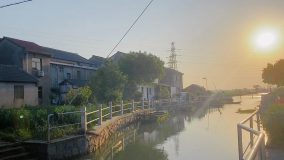
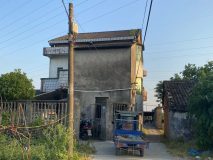
Youtube link: https://youtu.be/ZnUOvyE6wh8
Method:
When I started this video essay, the location I chose for this was a rural apartment due to the geographical location I am in—Shaoxing, Zhejiang. This is a place I occasionally return to and every time I return to the countryside I notice a big difference. The countryside is getting better and better, the once rough roads have become smooth tarmac and each flat block has been demolished and rebuilt one by one into a completely different style of flat. Luckily this huge change can be compared to the different buildings in the village (a side note that the once primitive vernacular architecture has not been completely eliminated). As I watched the two different styles of architecture appear in the village, I started to think about this. So it prompted me to turn this phenomenon into a project for my final period. The method of completing this project was actually quite simple and uncomplicated. I was able to get a closer look at the two types of apartments, one original and the other modern. I then photographed the two buildings with my mobile phone device. The images recorded show that just by looking at the exterior, we can see that the building materials used for the two exteriors are completely different. The modern apartments prefer marble tiles to decorate the walls, while the traditional rustic apartments are just white lime. The architecture of modern apartments is also becoming more complex: for example, different three-dimensional geometric structures are interspersed. It is clear that in contrast to the traditional apartments, which are simply rectangular blocks connected to one another by movement. And finally, in the division of areas and spaces, the two styles are also, unsurprisingly, opposite. Because of these differences, I chose to document them first through pictures and put them into my video production. For the video, I have shot both moving video clips and still images. The main aim is that the viewer who sees this video can feel the difference in both motion and stillness. The line of development of the video starts with an introduction to the traditional vernacular apartment to the changes and development of this type of building at this stage. A lot of footage of this architecture was shot behind the scenes in the short two and a half minute video. At the same time, to ensure the accuracy of the filming, I also refer to the ideas of some Chinese architects of the vernacular architect school. One of the architects I personally admire and agree with the most is the Chinese architect Wang Shu. Many of his works are also related to vernacular architecture. So some of the ideas in my video are very similar to his.
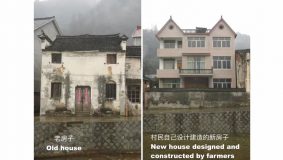
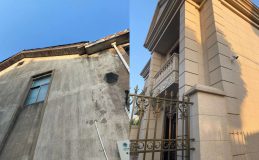
Reflection:
Chinese local architecture needs someone like Wang Shu to save, such as his award-winning vernacular architecture: Fuchun Mountain Pavilion (Art Museum), a building related to landscapes. Wang Shu said that the museum is a work that pays tribute to Huang Gongwang and tradition. Huang Gongwang’s “Fuchun Mountain Residence” reflects the Chinese people’s distant and elegant landscape aesthetic feelings, from the realm of pen and ink, the realm of humanities to the realm of life, it has a transmission process. If “Fuchun Mountain Residence” is a painter presenting the Fuchun landscape from a two-dimensional plane, then the architect uses three-dimensional means, space, time, and nature. Between heaven and earth, between mountains and rivers, it is admirable, livable, and travelable.
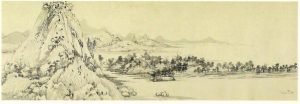
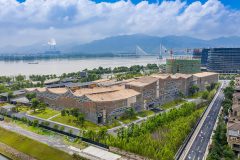
Through this final project, I have gained a new perception of vernacular architecture. I feel that what the countryside presents is what belongs to a real city in China. The vernacular architecture itself shows more of the traditional Chinese cultural heritage and we have a responsibility and obligation to preserve them. At the same time, don’t let the countryside and its architecture disappear, please let more cities learn from the countryside.
References:
Youtube. (2016, December 6). Cities should learn from villages. Shu Wang 王澍. TED×Shanghai[Video filie]. Retrieved from https://youtu.be/LcS1ZhJrXoE
Wang Shu. (2016). Build a house造房子. Hunan Fine Arts Publishing House.
Wang Shu. (2017). Fuchunshan Art Museum富春山馆-Pritzker Architecture Prize. Jay A. Pritzker.,& Hyatt Foundation.
Huang Gongwang. (1350). Dwelling in the Fuchun Mountains富春山居图. Zhejiang Provincial Museum.
Oliver, P. (2006). Built to MeetNeeds: Cultural Issues in Vernacular Architecture. Architectural Press.
Chen Zhihua.,& Li Qiuxiang. (2010). Zhuge Village诸葛村:Chinese Heritage-Local Architecture. Tsinghua University Press.
The Central People’s Government of the People’s Republic of China. (2007, April 16). Shan Jixiang: It is imperative to protect vernacular architecture, perfecting the protection system is the key. http://www.gov.cn/gzdt/2007-04/16/content_584315.htm
Pan Siqi 3035949102
Your video is quite clear and fine, and your theme is fascinating and inspiring. In the video, you show the old-fashioned buildings that almost disppear even in the village. And you compare the newly-built western style houses with the old ones to show the change of the village and reflect the theme— the disappear of the old village and old culture in the modern China. Through the small houses in a small village in China you reflect the big change of China. And you choose a theme that is cultural and oriented in mainland.
Thoughtful project on urban sprawl vs. vernacular buildings in rural areas. Detailed analysis of the spaces and styles of the vernacular building in relation to its functions. Meaningful reflections on urban development. It is true that cities could learn from rural areas, but how? When people prefer new stylish buildings instead of old vernacular ones, how do you convince them their value in it? How could developers and government understand the importance of such? I wonder what you would think about these questions.